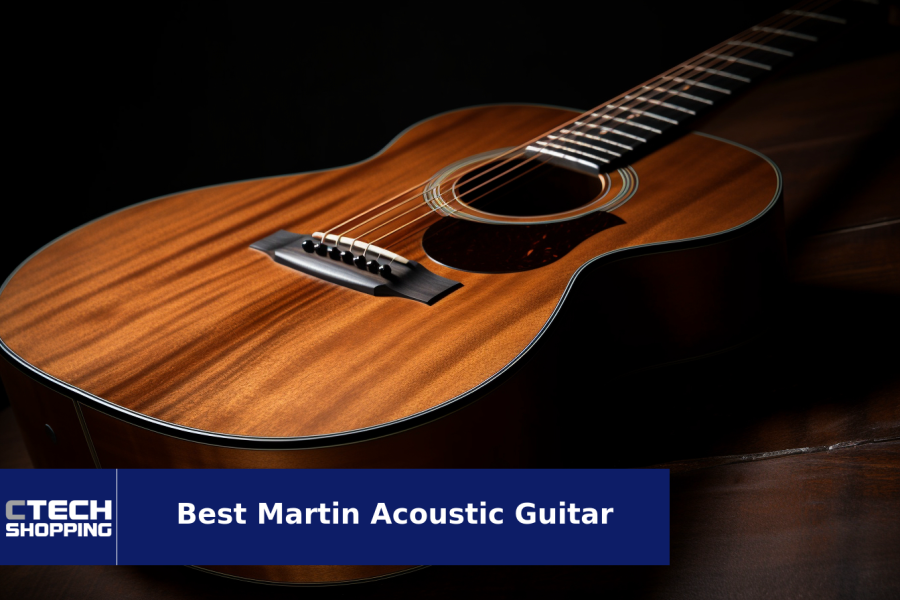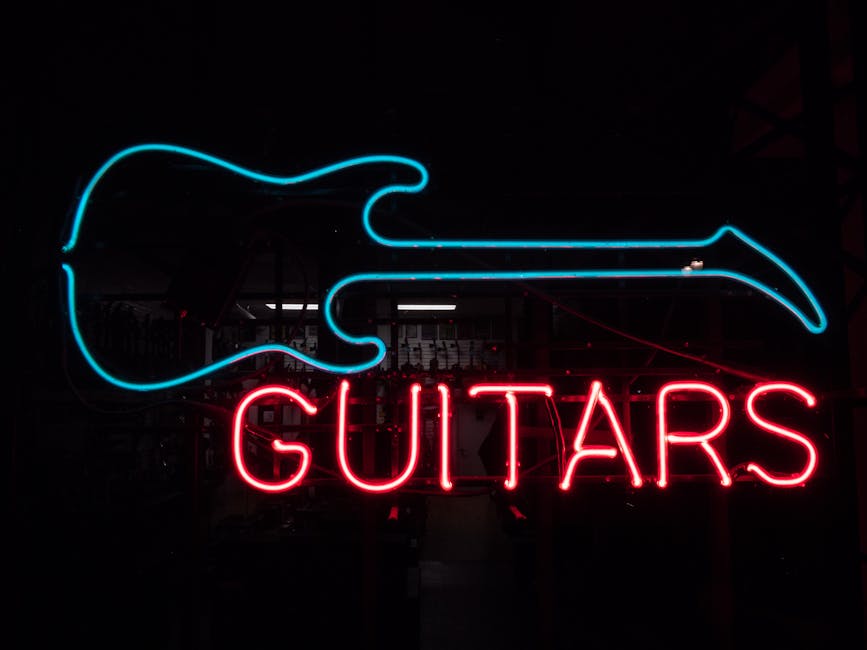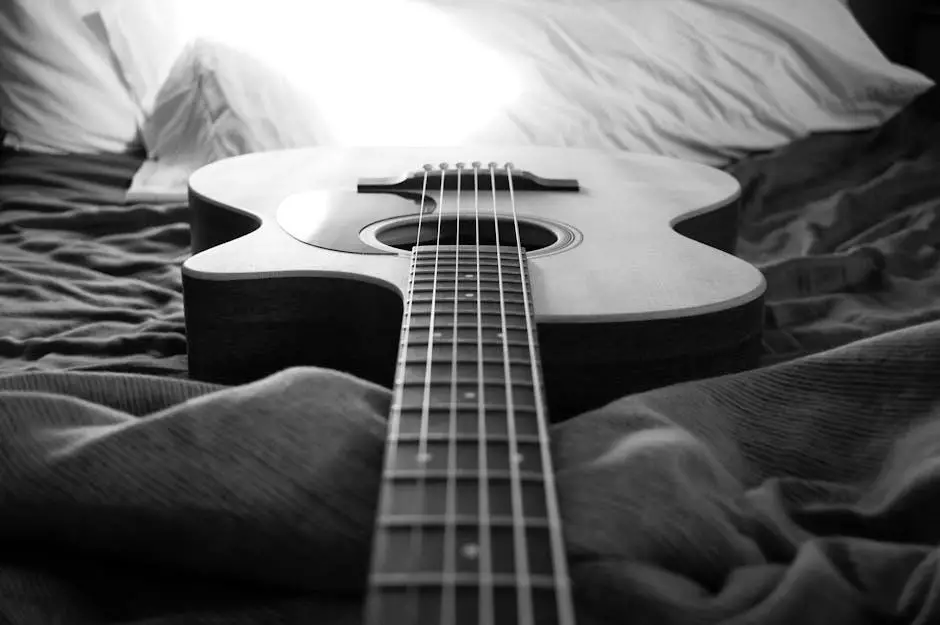Are you tired of strumming on a subpar acoustic guitar that sounds more like a dying cat than a guide-for-beginners/” title=”Unlocking Guitar Scales and Modes: A Guide for Beginners”>musical masterpiece? Well, fear not, dear reader, for we have the ultimate guide to choosing the best acoustic guitar that will have you sounding like a rockstar in no time! Say goodbye to twanging twigs and hello to harmonious strumming with our expert tips and tricks. So grab your pick, tune those strings, and get ready to rock and roll with the guitar of your dreams!
Contents
- 1 Understanding Different Types of Acoustic Guitars
- 2 Examining the Role of Wood in Acoustic Guitar Tone
- 3 Deciphering Acoustic Guitar Body Shapes and Sizes
- 4 Navigating the World of Acoustic Guitar Brands
- 5 The Significance of Scale Length and String Type in Your Selection
- 6 Mastering the Art of Acoustic Guitar Playability and Action
- 7 Evaluating Price Points: Investing in the Right Acoustic Guitar
- 8 FAQs
- 9 Now go strum your way to guitar greatness!
Understanding Different Types of Acoustic Guitars
So you’ve decided to dive into the world of acoustic guitars, but you’re feeling a bit overwhelmed by all the different types out there. Fear not, my guitar-loving friend! Let’s break it down for you in a way that’s both informative and entertaining.
First up, we have the dreadnought. This bad boy is known for its bold and booming sound, making it perfect for strumming along to your favorite folk tunes. With its large body and deep bass tones, the dreadnought is like the Hulk of the acoustic guitar world.
Next on the list is the concert guitar, also known as the “parlor” guitar. This little guy may be small in size, but don’t let that fool you. The concert guitar packs a punch with its bright and clear tones, making it ideal for fingerstyle playing or intimate jam sessions with friends.
And let’s not forget about the jumbo guitar. This beast of an instrument is all about volume and presence, making it perfect for commanding the stage during your next gig. With its bold sound and eye-catching size, the jumbo guitar is sure to make a statement wherever you play.

Examining the Role of Wood in Acoustic Guitar Tone
Wood plays a crucial role in determining the tone of an acoustic guitar. Different types of woods produce different sounds, making it essential for guitar makers to carefully select the right materials. Here are some ways in which wood influences the tone of a guitar:
- Spruce: Known for its bright and punchy sound, spruce is a popular choice for guitar tops. It delivers excellent clarity and projection, making it ideal for fingerstyle playing.
- Mahogany: Mahogany is prized for its warm and woody tone, perfect for blues and folk music. It provides a rich midrange and a balanced sound that works well in a variety of musical styles.
- Rosewood: With its deep and resonant sound, rosewood is often used for the back and sides of guitars. It adds complexity and depth to the tone, making it a favorite among many musicians.
While the type of wood is important, how it is treated and aged also affects the sound of a guitar. Seasoned wood can enhance the instrument’s resonance and improve its overall tonal quality. Additionally, the craftsmanship and design of the guitar also play a significant role in shaping its sound.
Ultimately, the combination of wood choice, construction techniques, and player skill all contribute to the unique tone of an acoustic guitar. So, next time you strum those strings, take a moment to appreciate the role that wood plays in creating the beautiful music that fills the air.

Deciphering Acoustic Guitar Body Shapes and Sizes
When it comes to acoustic guitar body shapes and sizes, things can get a bit confusing. With names like dreadnought, concert, and jumbo, it can feel like you’re trying to decipher a secret code. But fear not, dear reader, we are here to shed some light on this mysterious world of wooden wonders.
First up, we have the dreadnought. This body shape is named after a British battleship, which is fitting because it’s a real powerhouse. With its large, booming sound, the dreadnought is perfect for strumming away at your favorite campfire songs or belting out some bluesy riffs.
Next, we have the concert body shape. Don’t let the name fool you - this guitar is not meant for playing in front of a live audience. It’s actually a bit smaller than the dreadnought, making it perfect for fingerstyle playing or more intimate settings. Plus, it’s lightweight and easy to carry around, so you can serenade your friends wherever you go.
And last but not least, we have the jumbo body shape. This guitar is like the SUV of acoustic guitars - big, bold, and ready to make a statement. With its deep, booming sound, the jumbo is perfect for those who want to make a big impression with their playing. Just be prepared for a little extra weight when lugging this bad boy around.
So, you’ve decided to dive into the vast ocean of acoustic guitar brands. Congratulations! You’re about to embark on a wild ride full of highs, lows, and maybe a few strings breaking along the way. But fear not, dear reader, for I am here to guide you through this treacherous journey with wit and wisdom.
First things first, let’s talk about the big players in the game. Brands like Martin, Taylor, and Gibson are the Beyonces and Jay-Zs of the acoustic guitar world. They’re flashy, expensive, and have a loyal following of fans who swear they’re the best thing since sliced bread. If you’ve got the cash to burn, by all means, go for one of these bad boys. Just be prepared to spend the next few months eating nothing but ramen noodles.
Now, if you’re on a budget (like most of us mere mortals), don’t fret. There are plenty of underrated gems out there just waiting to be discovered. Brands like Yamaha, Seagull, and Alvarez may not have the same name recognition as their flashy counterparts, but they’re known for producing high-quality instruments at a fraction of the cost. Plus, you’ll have the satisfaction of knowing you didn’t have to sell a kidney to afford your new guitar.
So, whether you’re a seasoned pro or a beginner just dipping your toes into the world of acoustic guitars, there’s a brand out there waiting for you. So strap in, grab your pick, and get ready to rock out like never before. Who knows, you might just find your new musical soulmate along the way.

The Significance of Scale Length and String Type in Your Selection
When it comes to choosing the perfect guitar, there are a few key factors that you should take into consideration. Two of these factors are the scale length and the type of strings you use. These may seem like tiny details, but trust me, they can make a huge difference in your playing experience!
First off, let’s talk about scale length. This is basically the distance between the bridge of the guitar and the nut. A longer scale length means tighter strings and more tension, which can be great for heavier playing styles. On the flip side, a shorter scale length means looser strings and less tension, making it easier to bend those notes like a pro.
Now, onto string type. There are so many options out there – from plain old steel strings to fancy coated ones. Each type has its own unique sound and feel, so it’s important to choose wisely. If you want a bright, twangy sound, go for some good ol’ steel strings. If you prefer a smoother, warmer tone, try out some nylon or silk strings.
Remember, the scale length and string type you choose can make or break your playing experience. So don’t be afraid to experiment and find what works best for you. Whether you’re a rockstar in the making or just playing for fun, these small details can really make a big difference in your sound. Happy strumming!
Mastering the Art of Acoustic Guitar Playability and Action
So you’ve finally decided to take on the challenge of . Congratulations! Now, before you start shredding like a rock god, let’s go over some key points to help you on your journey.
First things first, make sure your guitar is properly set up. This includes adjusting the truss rod, saddle height, and intonation. If you’re not comfortable doing this yourself, it’s best to leave it to the professionals. A well-set up guitar can make all the difference in playability and action.
Next, consider the type of strings you’re using. Lighter gauge strings are easier to press down, making them ideal for beginners. Experiment with different brands and materials to find what works best for you. And don’t forget to keep those strings clean and fresh – nobody likes a rusty set!
Lastly, practice, practice, practice! The more you play, the more comfortable you’ll become with your instrument. Focus on proper technique, finger strength, and hand positioning. And remember, Rome wasn’t built in a day – becoming a master of acoustic guitar playability and action takes time and dedication. So pick up that guitar and get to strumming!
Evaluating Price Points: Investing in the Right Acoustic Guitar
So you’ve decided it’s time to level up your guitar game and invest in a quality acoustic guitar. But with so many options out there, how do you choose the right one without breaking the bank? Fear not, fellow strummer, for I am here to guide you through the murky waters of guitar shopping with humor and wit.
First things first, let’s talk about price points. When it comes to acoustic guitars, there is a wide range of prices to consider. You can find a decent beginner guitar for under $200, but if you’re serious about your craft, it might be worth splurging a little bit more for a higher quality instrument.
When evaluating price points, keep in mind that expensive doesn’t always equal better. It’s all about finding the right balance between quality and affordability. Consider factors such as the construction, materials, and brand reputation. Remember, a higher price tag doesn’t guarantee a better sound or playing experience.
Ultimately, the key to investing in the right acoustic guitar is to do your research, test out different options, and trust your instincts. And remember, the best guitar for you is the one that makes you want to pick it up and play every day. So go forth, brave guitarist, and may you find the perfect instrument to serenade the world with your sweet melodies.
FAQs
Which acoustic guitar is best for beginners?
Well, if you’re a beginner, you don’t want to break the bank on an expensive guitar just yet. Look for something affordable, easy to play, and good quality. A great option for beginners is the Yamaha FG800. Trust me, your fingers will thank you!
What should I look for in terms of sound quality?
Sound quality is key when choosing an acoustic guitar. Look for a guitar with a solid top for better resonance and tone. Brands like Taylor and Martin are known for their exceptional sound quality, so you can’t go wrong with one of those!
Should I go for a guitar with a cutaway or not?
A cutaway is great if you plan on playing higher up the neck, but it’s not essential. It really comes down to personal preference, so try out a few guitars with and without cutaways to see which one feels more comfortable for you.
Does the size of the guitar matter?
Yes, size does matter when it comes to acoustic guitars! Make sure you choose a guitar that feels comfortable to hold and play. For smaller players, a parlor or concert-size guitar might be a better fit, while larger players might prefer a dreadnought.
What type of wood is best for an acoustic guitar?
The type of wood used in an acoustic guitar can affect its tone and overall sound quality. Spruce is a popular choice for the top of the guitar, as it produces a bright and crisp sound. For the back and sides, mahogany or rosewood are great options for warm and rich tones.
Now go strum your way to guitar greatness!
Congratulations on making it through “The Ultimate Guide to Choosing the Best Acoustic Guitar”! Armed with all this knowledge, you’re now ready to find the guitar of your dreams. Remember, it’s not just about finding the perfect instrument, but also about the journey of learning and creating music. So go ahead, pick up that guitar, strum those strings, and let the music take you to new heights! Rock on!



